
Southwold is a seaside town and civil parish on the English North Sea coast in the East Suffolk district of Suffolk. It lies at the mouth of the River Blyth within the Suffolk Coast and Heaths Area of Outstanding Natural Beauty. The town is about 11 miles (18 km) south of Lowestoft, 29 miles (47 km) north-east of Ipswich and 97 miles (156 km) north-east of London, within the parliamentary constituency of Suffolk Coastal. The "All Usual Residents" 2011 Census figure gives a total of 1,098 persons for the town. The 2012 Housing Report by the Southwold and Reydon Society concluded that 49 per cent of the dwellings are used as second homes or let to holiday-makers.

Great Yarmouth, often called Yarmouth, is a seaside resort town in Norfolk, England, straddling the River Yare, some 20 miles (30 km) east of Norwich. A population of 38,693 in the 2011 Census made it Norfolk's third most populous place. Its fishing industry, mainly for herring, shrank after the mid-20th century and has all but ended. North Sea oil from the 1960s brought an oil-rig supply industry that services offshore natural gas rigs. More recent offshore wind power and other renewable energy have led to further services. Yarmouth has been a resort since 1760 and a gateway from the Norfolk Broads to the North Sea. Holiday-making rose when a railway opened in 1844, giving easier, cheaper access and bringing some settlement. Wellington Pier opened in 1854 and Britannia Pier in 1858. Through the 20th century, Yarmouth boomed as a resort, with a promenade, pubs, trams, fish-and-chip shops and theatres, and the Pleasure Beach, the Sea Life Centre, the Hippodrome Circus and the Time and Tide Museum, and a Victorian seaside Winter Garden in cast iron and glass.

Lowestoft is a North Sea coastal town and civil parish in Suffolk, England, on the edge of The Broads. It is the most easterly UK settlement, 110 miles (177 km) north-east of London, 38 miles (61 km) north-east of Ipswich and 22 miles (35 km) south-east of Norwich, and the main town in the district of East Suffolk. There is an estimated population of over 70,000 in the built-up area. The port developed out of the fishing industry and as a seaside resort with wide sandy beaches. As fishing declined, oil and gas exploitation in the North Sea in the 1960s developed. While these too have declined, Lowestoft is becoming a regional centre of the renewable energy industry.

Aldeburgh is a North Sea coastal English town in the county of Suffolk, north of the River Alde. Its estimated population was 2,276 in 2019. It was home to the composer Benjamin Britten and has been the centre of the international Aldeburgh Festival of arts at nearby Snape Maltings, founded by Britten in 1948. It remains an arts and literary centre, with an annual poetry festival and several food festivals and other events. As a Tudor port, Aldeburgh gained borough status in 1529 under Henry VIII. Its historic buildings include a 16th-century moot hall and a Napoleonic-era Martello Tower. Second homes make up about a third of its housing. Visitors are drawn to its Blue Flag shingle beach and fisherman huts, where fresh fish are sold daily, by Aldeburgh Yacht Club, and by its cultural offerings. Two family-run fish and chip shops are listed among the best in the country.

Somerleyton is a village and former civil parish in the north of the English county of Suffolk. It is 4.5 miles (7.2 km) north-west of Lowestoft and 5.5 miles (8.9 km) south-west of Great Yarmouth in the East Suffolk district. The village is closely associated with Somerleyton Hall and was largely rebuilt as a model village in the 19th-century at the direction of Samuel Morton Peto. The parish was combined with Herringfleet and Ashby to create the parish of Somerleyton, Ashby and Herringfleet in 1987.

Sir Christopher Sydney Cockerell CBE RDI FRS was an English engineer, best known as the inventor of the hovercraft.
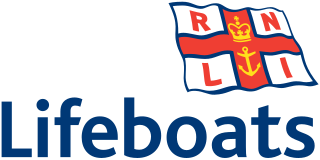
The Royal National Lifeboat Institution (RNLI) is the largest charity that saves lives at sea around the coasts of the United Kingdom, the Republic of Ireland, the Channel Islands, and the Isle of Man, as well as on some inland waterways. It is one of several lifeboat services operating in the same area.
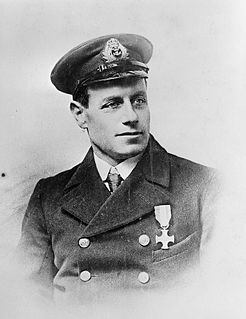
Skipper Thomas Crisp VC, DSC, RNR was an English posthumous recipient of the Victoria Cross. Crisp, in civilian life a commercial fisherman operating from Lowestoft in Suffolk, earned his award after being killed during the defence of his vessel, the armed naval smack Nelson, in the North Sea against an attack from a German submarine in 1917.
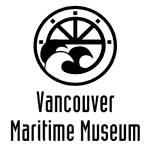
The Vancouver Maritime Museum is a maritime museum devoted to presenting the maritime history of Vancouver, British Columbia, Canada, and the Canadian Arctic. Opened in 1959 as a Vancouver centennial project, it is located within Vanier Park just west of False Creek on the Vancouver waterfront. The museum is affiliated with CMA, CHIN, and Virtual Museum of Canada.

The Whaling Museum & Education Center, formerly known as The Whaling Museum, is a maritime museum located in Cold Spring Harbor, New York dedicated to exploring the local history and impact of the whaling industry, the maritime heritage of Long Island, and the relationship between people and the ocean.
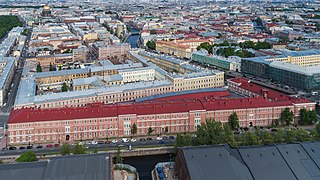
Central Naval Museum is a naval museum in St Petersburg, Russia. It is one of the first museums in Russia and one of the world’s largest naval museums, with a large collection of artefacts, models and paintings reflecting the development of Russian naval traditions and the history of the Russian Navy. The museum’s permanent display includes such relics as the Botik of Peter the Great, Catherine II’s marine throne, trophies captured in sea battles, and the personal belongings of prominent Russian and Soviet naval commanders. The collection includes paintings by Ivan Aivazovsky, Alexey Bogolyubov, Lev Lagorio and other marine artists, ship sculpture, navigational instruments, naval equipment and machinery from the 17th to 20th centuries and numerous models of ships. The main exposition consists of nineteen halls. There is a complex of six museum halls for exhibitions.

The Port of Lowestoft is a harbour in Lowestoft in the English county of Suffolk owned by Associated British Ports. It is the most easterly harbour in the United Kingdom and has direct sea access to the North Sea. The harbour is made up of two sections divided by a bascule bridge. The inner harbour is formed by Lake Lothing whilst the outer harbour is constructed from breakwaters.

East Coast College is a Further Education (FE) college which has campuses in Lowestoft, Suffolk and Great Yarmouth, Norfolk. Following a six month pilot area review in 2014, it was proposed that the merger of Great Yarmouth College and Lowestoft College would result in improved education and training provision locally. The colleges have now formed a Federation as East Coast College. The colleges formally merged in the Summer of 2017 ready for the new academic year. East Coast College is a partner college of the University of Suffolk and the Lowestoft campus boasts specialist maritime and offshore training opportunities.

Excelsior is an authentically restored fishing smack of the Lowestoft fishing fleet and a member of the National Historic Fleet. She was built by John Chambers of Lowestoft in 1921 and worked until 1936 before being converted into a motor coaster.</ref> In 2021 Excelsior will celebrate her 100th birthday. During her time as a motor coaster she was known as Svinør and worked mainly in Norwegian waters before returning to Lowestoft in 1972.
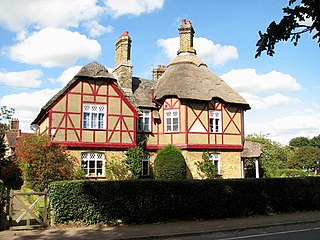
Somerleyton, Ashby and Herringfleet is a civil parish in the north of the English county of Suffolk. It is 5 miles (8.0 km) north-west of Lowestoft and the same distance south-west of Great Yarmouth and is in the East Suffolk district. The parish is made up of the villages of Somerleyton, Ashby and Herringfleet and at the 2011 United Kingdom census had a population of 427.

Lowestoft Lifeboat Station is a Royal National Lifeboat Institution (RNLI) operated lifeboat station in the town of Lowestoft in the English county of Suffolk. The station is located at the mouth of Lowestoft's outer harbour on the South pier. It is one of the oldest lifeboat stations in the United Kingdom, having been established in 1801.

RNLB Alfred Corry is a Norfolk and Suffolk-class, non-self-righting, sailing and rowing lifeboat which served in the town of Southwold in the county of Suffolk. She is kept on display in a museum in Southwold.

The Lowestoft War Memorial Museum is a museum located in Lowestoft in the English county of Suffolk. It is housed in the World War II headquarters of the Royal Naval Patrol Service in Sparrows Nest Gardens in the north of the town. The museum is dedicated to all of the people of Lowestoft who served during World War I and World War II. It was opened in 1995, to coincide with the 50th anniversary of VE day on 8 May that year.

Lowestoft Cemetery is a burial ground in the town of Lowestoft in Suffolk. It is best known for its large number of Royal Navy burials from World War I and World War II; these are maintained by the Commonwealth War Graves Commission. Thomas Crisp, who was posthumously awarded the Victoria Cross in 1917 is buried here as is Robert William Hook, coxswain at RNLI Lowestoft from 1853 to 1883 and who has been credited with saving more than 600 lives. The cemetery is managed by Waveney District Council.

The Arklow Maritime Museum opened in 1976 in the old technical school on Saint Marys Road in Arklow, County Wicklow. Its original purpose was to celebrate the town's rich seafaring heritage, described by the late maritime historian John de Courcy Ireland in a letter to the museum as "Ireland's Most Maritime Town". In 2009, the museum moved to its current location at the Bridgewater Shopping Centre.




























